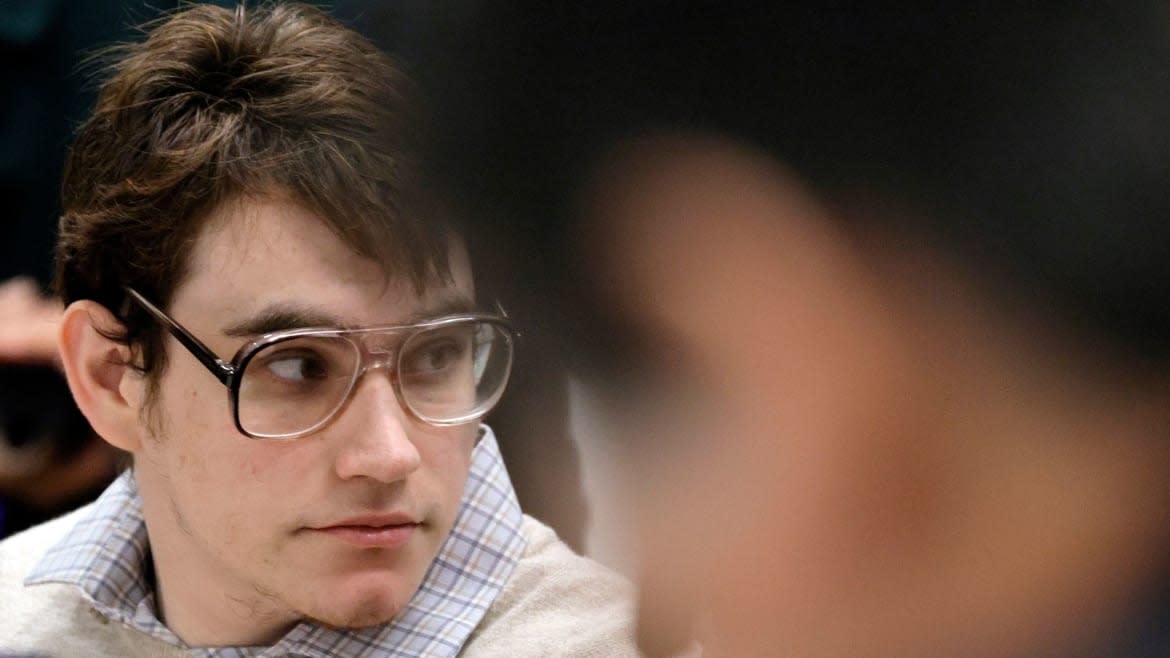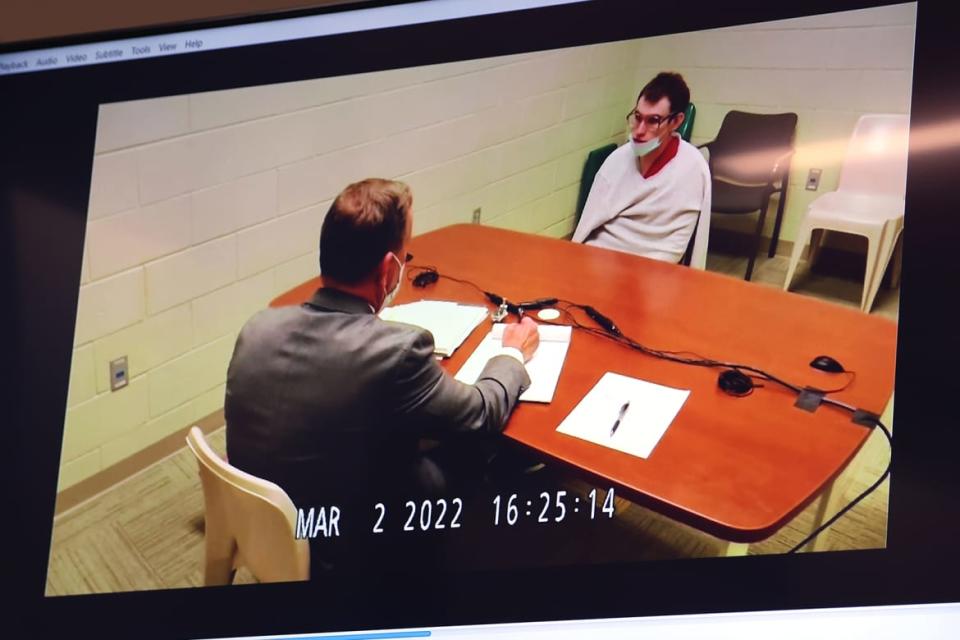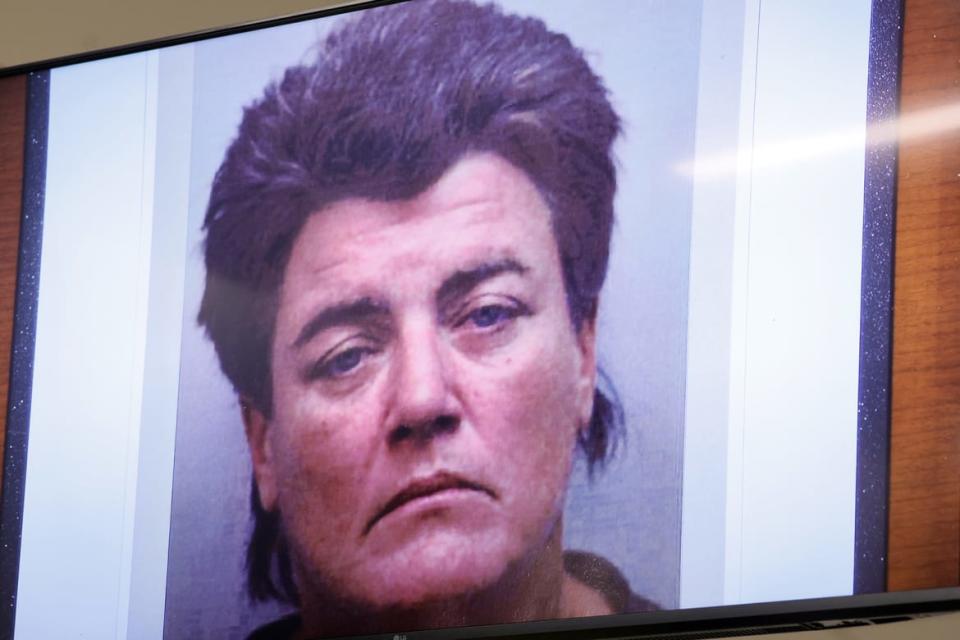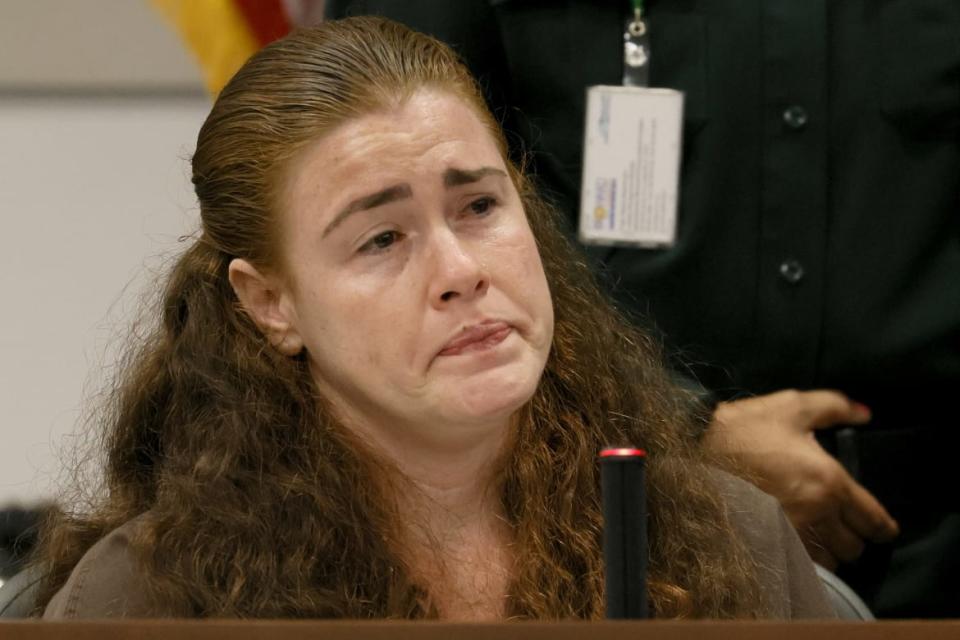Victims’ Families Sob as Jury Spares Parkland Shooter’s Life

A Florida jury determined Thursday that Parkland school shooter Nikolas Cruz should not be sentenced to death for his massacre of 17 people at Marjory Stoneman Douglas High School in 2018.
The verdict, delivered after just a day of deliberations, came after an agonizing trial that lasted nearly four months, featuring heart-wrenching testimony from 90 survivors, footage of the slaughter itself, and even a testy argument between Judge Elizabeth Scherer and Cruz’s defense attorneys.
Having already pleaded guilty to the shooting last October, Cruz’s trial was solely to determine whether he should be executed or serve a life sentence. Under Florida law, a jury would have to be unanimous in its decision for execution. If even a single juror objected, 24-year-old Cruz would get life without parole.
While the jury unanimously found that prosecutors had proved certain aggravating factors—for example, that the crime was premeditated, “especially heinous, atrocious or cruel,” and warranted a possible death sentence—they did not unanimously find that those aggravating factors were outweighed by mitigating circumstances put forward by Cruz’s defense team.
It was not disclosed how many of the 12 jurors voted to spare Cruz’s life. Some jurors’ voices appeared to crack as they said “yes” to affirm the verdict.
As verdicts were slowly read out for all 17 victims, some parents in the public gallery appeared shocked. Some shook their heads, put their head in the hands, or whispered among themselves to try to make sense of the jury’s decision. The family of Chris Hixon, a 49-year-old wrestling coach killed in the massacre, walked out of the courtroom after the verdict for his murder was read. Cruz, meanwhile, looked down at a table or glanced at his lawyers.
After court was adjourned, families cried together as they left the building.
11 of 17 counts have been read - all LIFE IN PRISON for #NikolasCruz .
Families in the gallery are in shock, angry, disbelief. Heads shaking. Anger on some faces. pic.twitter.com/fjxOGEMHXx— Cathy Russon (@cathyrusson) October 13, 2022
Prosecutors had argued Cruz meticulously planned out the massacre in cold blood. In final arguments, prosecutor Mike Statz said Cruz was “hunting his victims,” sparing students on the second floor of the school’s freshman building while mowing down teens on the first and third floors, including the wounded.
“He went and finished them off,” Satz said. “He made sure they were dead.”
Details like this, Satz argued, dismissed the defense’s argument that Cruz was “brain damaged” from birth and didn’t have the ability to plan the shooting in advance. Instead, Satz said Cruz Googled previous mass shootings, modified his rifle and purchased ammunition. Just before the shooting, he filmed a video in which he said he would kill “at least 20” people.
Satz said this culminated with Cruz taking an Uber to his former high school in a JROTC polo—to blend in—on Feb. 14, 2018, and carrying out the fifth deadliest school shooting in U.S. history.
“He has the ability to plan, to plan well,” Satz said. “He accomplished his plan.”

Cruz was shown in a taped interview with forensic psychologist Dr. Charles Scott.
Also damning for Cruz was his own words, Satz argued. In a recorded session with a therapist, Cruz said he specifically chose Valentine’s Day to carry out the shooting because he didn’t like the holiday and “wanted to ruin it for everyone.”
After the shooting, Cruz briefly fled the school along with fleeing students. He was identified and detained an hour later, but a therapist asked him why he stopped shooting at all.
"I couldn't find anyone to kill," he said.
Cruz also told the therapist that he considered sparing four people—three girls and a boy, who was suffering from a bullet wound in his leg. But all four gave him “nasty looks,” so he finished them off.
“His head blew up like a water balloon,” Cruz said of the boy, who gave him a “look of anger” before he was shot dead.
Cruz’s trial was a rollercoaster of emotions for victims and even the jurors themselves, who reportedly squirmed while video of the massacre was played. It also uncovered details about Cruz’s troubled childhood, which defense attorneys hoped would convince at least one juror that Cruz shouldn’t receive the death penalty.
His attorneys said his brain was “poisoned” at birth because of his mother’s drinking and drug abuse while pregnant, arguing that Cruz was “irretrievably broken through no fault of his own.”

An undated photograph of Brenda Woodard was shown during the trial.
Melisa McNeill, Cruz’s lead defense attorney, said Cruz’s mother, Brenda Woodard, was a crack addict and prostitute. Cruz’s father, who remains unknown, was likely a john or a rapist, she said.
His mother’s substance abuse caused Cruz to develop fetal alcohol spectrum disorder and antisocial personality disorder at birth, McNeill said, which has impaired him to this day—despite being adopted at a young age. Educators and psychologists also testified for the defense, saying Cruz had outbursts of violence toward other young students.
Another witness called by McNeill to support this argument was Danielle Woodard, Cruz’s sister, who said their mother “had no regard for my life or his life.”

Danielle Woodard gave emotional testimony during the trial.
Woodard was one of over 50 witnesses that McNeill planned to call to the stand. But the defense abruptly rested their case on Sept. 14, after 26 witnesses testified, canceling their plans at the last second and sending Scherer in a fury that went viral.
McNeill’s announcement, as jurors and their 10 alternates lined up outside the courtroom, effectively “wasted a day in court,” Scherer said, as prosecutors weren’t prepared to begin their rebuttal on such short notice.
“To have 22 people march into court and be waiting as if it is some kind of game. I have never experienced such a level of unprofessionalism in my career,” Scherer fumed.
McNeill shot back, saying Scherer was “insulting” her on the record in front of a client. Scherer shot back herself: “You’ve been insulting me the entire trial. Blatantly taking your headphones off, arguing with me, storming out, coming late intentionally if you don’t like my rulings. So, quite frankly, this has been long overdue. So please be seated.”
"I have never experienced a level of unprofessionalism in my career. It's unbelievable."
— Judge Elizabeth Scherer rips into the Parkland shooter's defense after it unexpectedly rest its case, leading to a heated exchange pic.twitter.com/SQ8lceOh1F— The Recount (@therecount) September 14, 2022
McNeill’s team motioned to have Scherer removed from the trial for showing “longstanding animosity” but Scherer rejected it for being “legally insufficient,” CBS reported.
Among the 17 killed, 14 were teenage students. They were: Alyssa Alhadeff, 14; Martin Duque Anguiano, 14; Nicholas Dworet, 17; Jaime Guttenberg, 14; Luke Hoyer, 15; Cara Loughran, 14; Gina Montalto, 14; Joaquin Oliver, 17; Alaina Petty, 14; Meadow Pollack, 18; Helena Ramsay, 17; Alex Schachter, 14; Carmen Schentrup, 16; and Peter Wang, 14.
Also gunned down by Cruz were Hixon, geography teacher Scott Beigel, 35, and assistant football coach Aaron Feis, 37.
Get the Daily Beast's biggest scoops and scandals delivered right to your inbox. Sign up now.
Stay informed and gain unlimited access to the Daily Beast's unmatched reporting. Subscribe now.

 Yahoo News
Yahoo News 
